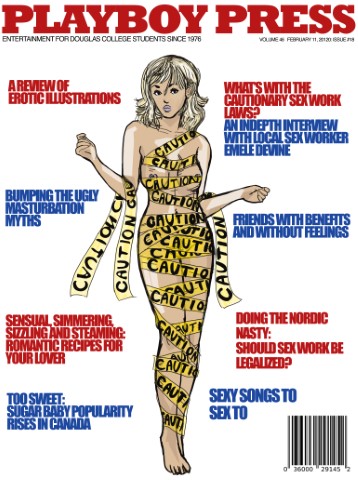
Amor reminds us that to get the most out of the thrifting experience one must respect the individual elements of clothing which best adhere to one’s personal style.
A conversation about buying less with Image Consultant, Dulce Amor
By CJ Sommerfeld, Production Assistant
Led by the Gen-Zers who are en route to saving our planet, thrifting has undoubtingly blown up within the last few years. As opposed to being seen as a means of buying clothes out of impoverished necessity, sourcing and wearing preloved clothing has exploded among the common person. Thrifting has ridden the hip wave for quite some time; now, the idea that this way of shopping and dressing is isolated to penniless persons and hipsters is long gone. Instead, sourcing second-hand has become the norm for many. While shopping second-hand in itself has many environmental benefits, how can we thrift further consciously? The Other Press spoke with 24-year-old Image Consultant, Dulce Amor to chat about buying less.
“As an image consultant who was trained in Mexico, most of the teachers never instilled in us [a need] to shop consciously; [that was] until a couple of years ago [when] I went to an academy whose motto was ‘shop consciously.’ I entered a class with this teacher and she completely changed the way I viewed shopping,” Amor begins. “From there I started to buy second-hand clothes and I have made sure to talk about this topic to my clients so that they are aware and use their clothes many times—some of them already buy second-hand.”
Now, what exactly does thrift consciously mean? “Only shop for what you really need, and make sure that you’re buying clothes that you will actually wear.” Amor reminds us that to get the most out of the thrifting experience one must respect the individual elements of clothing which best adhere to one’s personal style. For the best results, it’s important to know one’s body shape, skin and hair colour palettes. “When you know what fits you best, which style you have and which colours suit you—then it becomes easier to shop for what you need and will wear.” Knowing the style that fits your body type is especially important when sourcing clothes secondhand since vintage sizing differs radically from present-day sizes. Not to mention that when thrifted pieces don’t fit, you can’t simply ‘size up’, or ‘size down’ as you can when purchasing new clothes. By knowing which fit best adheres to your body, there’s no need to rely on the size which the tag reads.
She continues to tell the Other Press that it is additionally beneficial to thrift with the contents of one’s closet in mind. “[While shopping] you need to ask yourself ‘What pieces do I have a lot of?’ and ‘What clothes do I always wear?’ Don’t buy more items that you already have tons of, instead focus on what you really need—add that to your closet and don’t buy more.” Amor shares an activity that she performs with her clients to maneuver the contents of their closets and make the most of what they already own as means of buying less. “We make a sudoku [puzzle]—but with clothes. This shows my clients that they have tons of combinations, so they actually use everything in their closet.”
Despite Guadalajara, Mexico being saturated with tianguis—flea markets—the average young adult in Mexico chooses not to shop second-hand. “They prefer to shop in stores at the mall especially Intidex because it’s cheap.” Amor has noticed, however, a collective change in attitudes towards shopping second-hand via social influence. “I’ve seen a lot of people getting more interested in thrifting because they find out that thrifted clothes are cheap as well—and they can find really unique pieces. More people are sharing their experiences [on social media] when buying secondhand, which makes others doubt their own choices [about purchasing new clothes]. I have a page on Instagram, where I like to show what I get when I go to tianguis—others get interested just from seeing what I bought.”
Aside from displaying her thrifted finds on Instagram, Amor also hosts workshops to further educate and encourage a change in perspective towards sourcing second-hand. “I explain the impact [which purchasing new clothing] has on the planet, and how clothes are one of the things that affect the environment the most. I teach them to question the stores they shop in—are they really being friendly to the environment? Are they really being friendly to the people who work for them? The client can change everything—but the stores can also change if we stop buying like crazy since brands always focus on how the client is buying, how often, and which kind of clothes.”
Unfortunately, however, Gen Xers and older millennials nearing the Gen X perimeter don’t seem to be catching on. “Older generations don’t care too much about shopping second hand, and it’s harder for them to understand the impact. I’ve just seen people who are more aware of the planet to shop second hand, but if they have no idea, they’re not gonna buy or thrift.”
In many countries, Mexico included, the thrifting trend—let alone doing so consciously—isn’t as prevalent. This isn’t an unfamiliar social perspective, as it largely conforms to the way purchasing used clothes used to be viewed during Y2K and beyond among Canadians. Fortunately, however, now the anxiety of looking ‘poor’—a concern which seems to have been more worry-worthy in an earlier era, merely exists when wearing second-hand clothes in some countries. But we’re not done yet as it takes all realms of societies to understand why this way of shopping should be a new norm.
And while planet-destroying, mega-brands like Shien and Intidex have increased the accessibility of buying new clothes for those who don’t have much disposable income, however, snagging a good sale shouldn’t be the reason to follow through with a purchase. As Amor mentioned earlier, purchasing from these fast-fashion brands comes at a cost. Regardless of increasingly inexpensive options becoming available, how is society going to understand the expansive cost of purchasing new clothing as opposed to second-hand? Education surrounding why we shouldn’t purchase new clothing is dire—as are people willing to teach this information.
Amor is leading the pack towards social change through educating others about thrifting consciously, and sourcing second-hand in general. Although this environmentally-conscious Zeitgeist is more commonplace in Canada, people like Amor are aiding in its global spread.
“From your perspective, what are some benefits of buying second-hand and shopping consciously?
Benefits:
Clothes are more original.
We’re giving the clothes a second chance to be worn.
Lower prices.
You can get more creative because it’s not a normal way to shop.
You’re helping the environment.
It shows how you [want] to take care of the planet we’re living [on].
It helps to reduce the water used [to make new] clothes.
It also helps to reduce chemical contamination.
What’re some consequences of not shopping second-hand?
Consequences:
If we don’t support the second hand and thrifting:
We’re supporting the fact that our clothes travel a lot and this has a negative impact on the environment.
You’re supporting brands who do not care about their workers and [suppress them through] bad working conditions [or child labour].
If we don’t get conscious about this…we’re gonna regret it sooner or later.
It’s our planet and we have to take care of it and us.”


